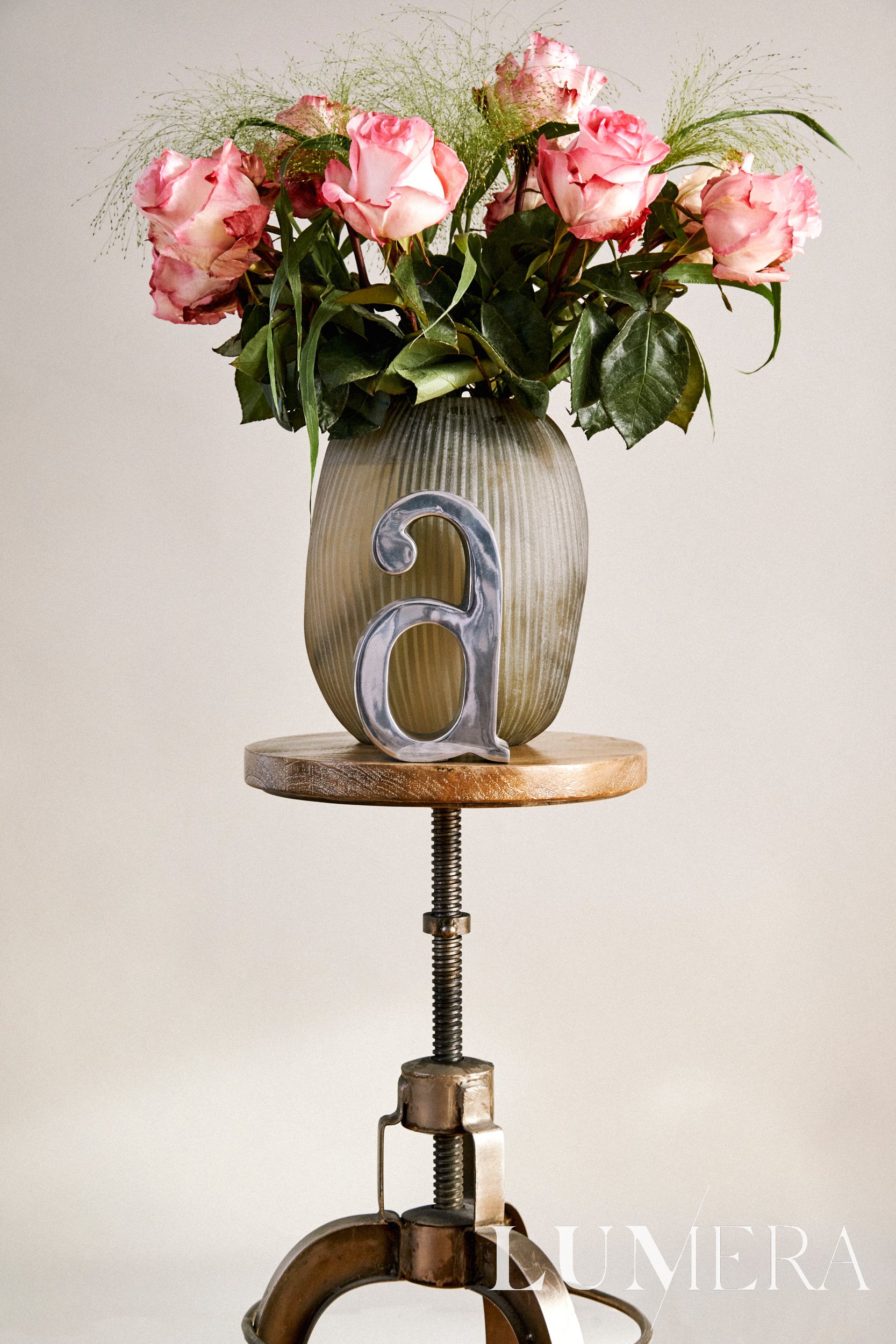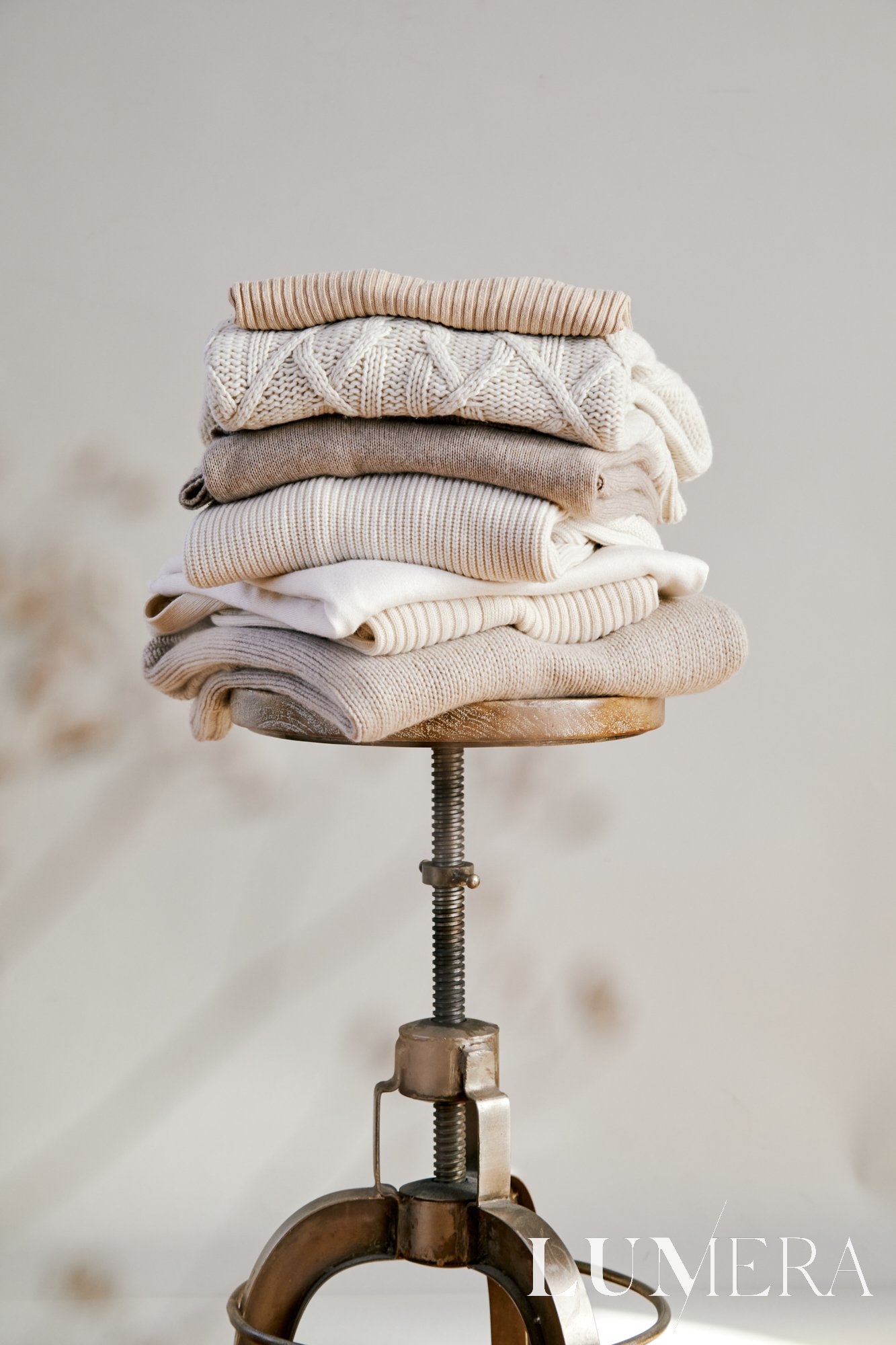The A-Z of sustainable fashion
words by HOLLY KELSEY
photographs by ANDREW DAY
creative direction by SARAH MARIE FRANKEN
-A-
Atelier - refers to the creation of exclusive made-to-order clothing. Ateliers often create custom clothing where the pieces are made from high quality, premium fabrics and are sewn together with meticulous detail by the most experienced and capable seamstresses.
-B-
B-Corp - Certified B Corporations (B Corps or B Corporations for short) use profits and growth as a means to a greater end: positive impact for their employees, communities, and the environment. Certified B-Corp is the most rigorous and demanding standards, requiring brands to answer 300 questions about their social and environmental impacts. Certified B-corp companies believe that we must be the change we seek in the world. It basically is an Oscar award of sustainability for brands.
“Certified B-corp companies believe that we must be the change we seek in the world.”
-C-
Circular fashion - when the production of an item and the end of its life are seen as equally important, ensuring use and reuse for as long as possible. A circular brand will design, produce, sell and collect products which enables reuse and recycling.
-D-
Dead-stock fabrics - fabrics from another company that has bought too much of it and needs to sell the leftovers. They are also called leftover-fabrics. Another possibility is that the fabrics are scraps from factories’ cutting room floor that can be made into something new.
-E-
Ethical fashion - is when a garment is designed, produced, and distributed in a way that focuses on protecting people and the planet. The term ethical fashion can cover issues such as working conditions, exploitation, fair trade, sustainable production, the environment, and animal welfare.
-F-
Footprint - such as carbon footprint (you might have also heard the word greenhouse-gas emissions). Currently, the fashion industry is responsible for 10 % of annual global carbon emissions. Solutions that brands can adopt to cut their footprint include initiatives such as energy-efficiency improvements and a transition to renewable energy, increased use of sustainable transport, improved packaging with recycled materials, reducing returns and avoiding overproduction of garments.
-G-
Greenwashing - is when a company or organization tries to falsely appear sustainable with the help of marketing to gain consumers. Some brands will spend more time and money on marketing themselves as environmentally friendly than on actually minimizing their environmental impact. Rebranding is a classic greenwashing tactic. Companies will often rebrand or repackage their products to look more environmentally friendly.
“Greenwashing is when a company or organization tries to falsely appear sustainable with the help of marketing to gain consumers.”
-H-
Heritage - a heritage brand is a company with a strong legacy and usually family-owned businesses. They are the key players in the industry who have the most impact, they should lead in an aspirational way to make other companies follow in their footsteps. Smaller brands can research lessons learnt from larger companies to inform and educate themselves for their own business practices. For example, when Chanel announced they would no longer use fur, it set the tone of how the rest of the industry should follow. Another example is when Hermès announced they would introduce mushroom leather into their collections.
-I-
Inclusivity - one term of inclusivity involves including models of all different sizes and ages and who are racially diverse. This should also spread to the behind the scenes activities - not just for the shows and campaigns - but also for people who work in production, design, marketing, styling etc. Even in terms of a brand’s products there should be a range that includes everyone. Fashion has always had an image of being exclusive in the past, however this an outdated standard that plays no part in the world of fashion today.
-J-
Jeans (according to UNEP it takes 2000 gallons of water to make a pair of jeans) - Buying vintage or recycled jeans is a great solution for this! If you have an old pair of jeans try upcycling them and making them fit your style again! The denim brand Levi’s is a gold example of building sustainability into their business model. In 2010, Levi's launched the Better Cotton Initiative, which trains farmers to use less water, pesticides, insecticides, and synthetic fertilisers when growing cotton plants. Levi’s uses organic cotton, less water, and plant-based dyes. They have even launched a secondhand program where used denim is resold instead of being sent to landfills as trash. Since 2015 Levi’s has also collaborated with the company Redone who focus on reconstructing the brand’s iconic jeans in creative ways.
“Levi's launched the Better Cotton Initiative, which trains farmers to use less water, pesticides, insecticides, and synthetic fertilisers when growing cotton plants.”
-K-
Kelp Fibre - Kelp is an algae seaweed, it requires no fresh water, no arable land, no fertilisers, no pesticides—and it’s very fast growing. Kelp forests have the potential to sequester up to 20 times more carbon per acre than land forests. The company Algiknit uses kelp to create eco-conscious, renewable yarns, using materials with a significantly lower footprint than conventional textiles. Pangaia uses seaweed fiber (kelp) in their t-shirts which doesn’t use the process of irrigation and no pesticides are used which saves a lot of water and energy.
-L-
Local - Producing locally, buying locally all helps your local communities and also reduces the carbon footprint. Buying in more local stores like vintage, thrift or charity shops is a good way to shop locally. Or even buying from small brands that are in your region or country.
-M-
Most polluting industry - It has come out in recent years that the fashion industry is the second most polluting industry in the world. This shows that it’s necessary for fashion to make a big change by moving away from fast fashion and producing garments that are sustainably made for the benefit of the planet.
-N-
Net zero - You might have heard this phrase a lot recently and not just in the fashion industry. Around the world the leaders of different countries have spoken about milestones required to achieve net zero emissions by 2050. Being Net Zero means creating a business model to achieve a zero carbon future. For fashion being Net Zero means changing their use of energy - such as the emissions that come from raw material production, preparation, and manufacturing. Or even how they inform the consumers on buying, washing, reusing, recycling and garments ending up in landfills.
-O-
Organic - A lot of fabrics used in the industry directly impact and contribute to: the consumption of water, micro-plastic pollution, greenhouse gas emissions, soil degradation, or rainforest destruction. Organic cotton is grown without chemical pesticides or harmful fertilisers, this is a more environmentally friendly version compared to conventional cotton. Other materials that can be organic include jute, linen, silk, ramie, and wool.
-P-
Plastics - It’s not just discarded packaging and littered plastics that are an issue, it’s the plastics you can’t see: ‘Micro plastics’. Micro plastic are fibres that come from garments made from synthetic fabrics like polyester, rayon, and nylon. Fast fashion has a major problem with micro plastics in the way fabrics are processed, the materials are used and the short life-cycle of their garments. Even using the washing machine can distribute micro plastics, which eventually end up in the ocean. So invest in products such as a GuppyFriend bag to use for washing your clothes made from synthetic fabrics.
“Even using the washing machine can distribute micro plastics, which eventually end up in the ocean.”
-Q-
Question - You should always be able to get a full answer when you’re questioning a brand about their sustainability and ethics. You should always ask Who made this? How was it made? What fabrics were used? What impact did it have? If the answer isn’t clear the brand needs to work more on their transparency.
-R-
Responsible - Brands should always be responsible for their actions and impact on society and the planet. By being responsible they will benefit from strong commitment from both their consumers and suppliers.
-S-
Supply Chains - The process of making clothes - from an idea to the customer. You can trace the steps of how a garment has been made. Whether that’s sourcing materials, how they are then developed and manufactured to then distribution to the customer in store. Usually in the design process it sets the tone for how the rest of the process will happen. Fast fashion brands are always trying to find ways to speed up their supply chain, which will often have an unkind impact.
-T-
Transparency - means the company or brand is being honest about how they operate. Openly sharing information about how, where, and by whom a product was made.
-U-
Upcycling - Transforming an old, worn out or damaged piece of clothing into something new and wonderful.
“Upcycling Means Transforming an old, worn out or damaged piece of clothing into something new and wonderful.”
-V-
Vegan - Vegan fashion means not using leather, wool, cashmere, feathers or fur. In recent years vegan leather has become more and more popular. Stella McCartney became the trailblazer for this with her Falabella bag. Another example are the vegan shoes by Prota Fiori.
-W-
Workers - Because who makes your garment counts! It’s important to verify that working conditions are safe, that conditions are considerate to the workers’ mental health and that the workers are being paid correctly. The 2013 Rana Plaza disaster in Bangladesh focused more attention on how brands should be more accountable on creating safer working conditions.
-Y-
You! - Everyone can make a difference no matter who you are, how old you are, where you are, the consumer is the change maker, brands look to consumers to succeed.
“The consumer is the change maker, brands look to consumers to succeed.”
-Z-
Zero waste - means little or no textile waste in the production of clothing. There are two types: Pre-Consumer Zero Waste Fashion and Post-Consumer Zero Waste fashion. Pre-Consumer Zero Waste Fashion is when brands use recycled fabrics or create patterns without any leftover waste. Hermès has a ‘diffusion’ called Petit h - where they have artisans who create new unique products from the leftover fabrics and scraps from the other Hermès métiers. Post-Consumer Zero Waste is when garments would’t end up in landfills but would rather be resold, recycled and reused. Zero waste helps create a circular economy, it prevents the practice of single-use products.











Marsou founder and mother of three Laetitia Letellier Flandre shares her founding story, the inspiration behind her sustainable kids’ fashion brand and details about the current autumn/winter collection with us.